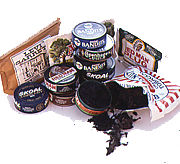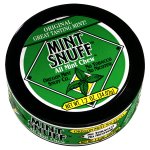
Smokeless
Tobacco
The American
Cancer Society reports that over 12 million people use some form of smokeless
tobacco also known as chewing tabacco. Over the last decade the largest
increase has been among the 8-17 year old age group. The tobacco
industry has taken advantage of this increase by exploiting the image that
athletes have on our young athletes and children. They are sponsoring sporting
events such as professional rodeos, women's tennis, monster truck rallies,
and car racing events, not to mention the association of baseball players
with smokeless tobacco.
The
health consequences of smokeless tobacco can be summarize as follows:
-
Dental
caries
-
Periodontal
(gum) effects.
-
Oral cavity
soft tissue alterations.
-
Leucoplakia
(White potentially pre-cancerous patches in the mouth).
-
Cancer
of the oral pharynx (throat) and oral cavity.
-
Addiction
to nicotine.
-
Hemodynamic
(blood) alterations due to the sugar content leading to increased blood
sugar levels.
The highly
addictive properties of nicotine has been recorded throughout the medical/dental
literature. Nicotine has been reported as more addictive then Heroine.
The direct association of smokeless tobacco and cancer is well documented.
The U.S. Department of Health and Human Services reports that tobacco snuff
contains the organic carcinogen nitrosonornicotine (NNN) which readily
produces malignant tumors of the trachea, esophagus, liver, and oral cavity.
Statistics show that 15%-20% of all adolescent men currently use smokeless
tobacco. About half have precancerous lesions in their mouth and the chances
of getting oral cancer is 400% greater than nonusers.
X
 Precancerous
lesion
Precancerous
lesion
|
 Cancerous lesion
Cancerous lesion
|
X
According
to a study by Edwards, Glover, and Schroeder in 1987, on the effects of
smokeless tobacco on heart rate and neuromuscular reactivity in athletes,
show that there is no evidence that smokeless tobacco gives athletes a
competitive edge in reaction time, movement time, and total response. In
fact they showed a reduction in overall stamina due to an increase in heart
rate and blood pressure.
Health
professionals are actively trying to help patients realize that smokeless
tobacco is NOT a safe alternative to smoking. Nicotine addiction is not
easy to break. One method suggested is the use of a placebo, or oral substitute,
such as chewing gum. However this does not simulate the texture, feel,
and taste of smokeless tobacco. Mint
Snuff TM was developed for just this purpose.
Mint
Snuff TM is simply mint leaves packaged in small round tins designed
to mimic snuff cans. The product contains no sugar and no nicotine and
effectively imitates smokeless tobacco. This may prove to be successful
in cessation programs along with nicotine gum and transdermal patches.

We
Welcome New Patients




